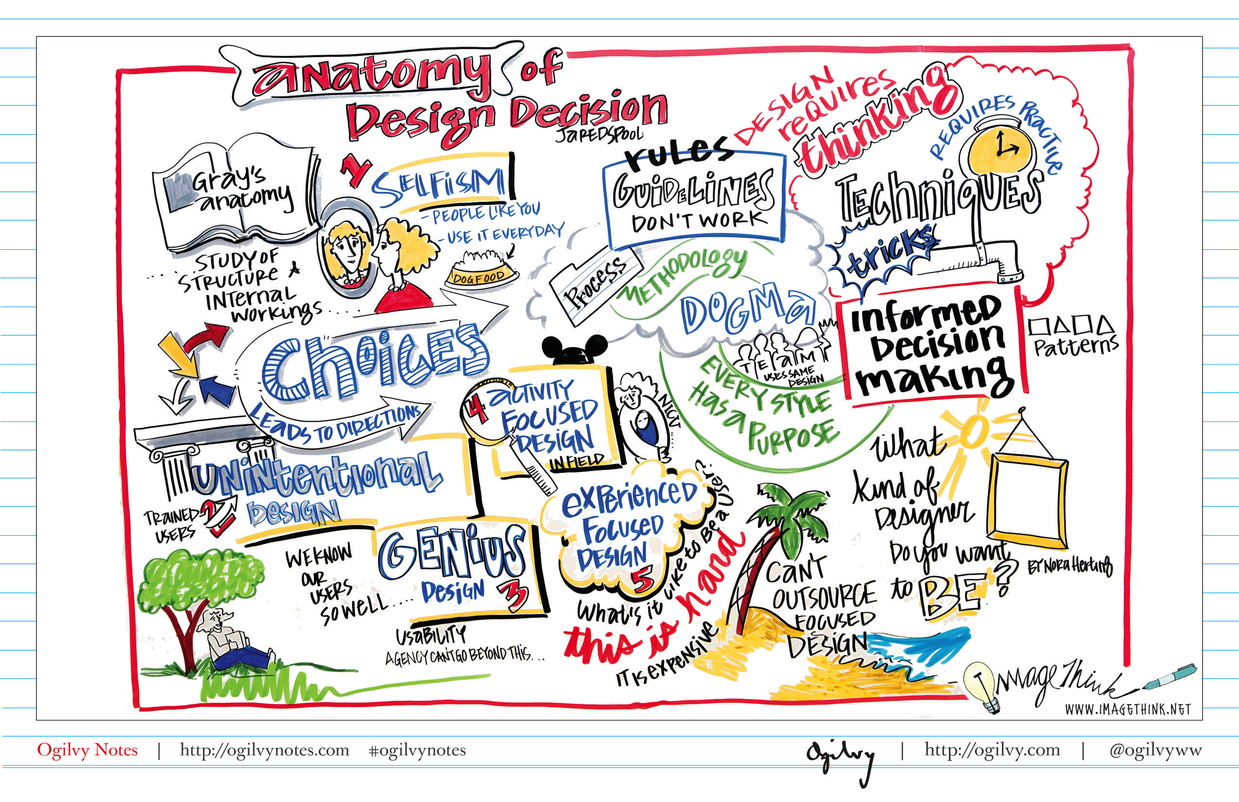Stefaniak, J.E. & Tracey, M.W. (2014, October/September). An examination of the decision-making process used by designers in multiple disciplines. Tech Trends, 58(5), 81-90.
Stefaniak & Tracey (2014) are interested in the relationship between decision-making and the design process. Though they are researchers in the field of instructional design, they sought input from designers across different professions (graphic, interior & architecture) to inform their inquiry into processes, solutions and iterations in making decisions about design. They take an exploratory approach in this research study through interviews and try to narrow their focus by the identification of two types of decision-making processes (discovery v idea imposition) and two types of solutions (ready-made v custom made). They also looked into the “effect of successive iterations through the reflection and acceptance or rejection of solution alternatives” (p. 82). The process for interviewing and coding is rigorous and iterative, allowing researchers and participants to influence the classification of themes and address distortion. Like many exploratory studies, I found the driving questions, context and literature review more compelling than the results or the implications discussed about the results. The default conclusion is that this study “shed some light on how designers combine education, experience and intuition to solve design challenges.”
Though these results are not particularly useful, I did find value in how Stefaniak & Tracey define the gap in our instructional design literature on the relationship between design and decision-making. Online learning design decisions related to disciplinary idiosyncracy have only been empirically examined in the instructional design literature anecdotally. Tessmer and Richey (1997) acknowledge a content culture to characterize teacher’s instructional beliefs, but do not offer guidance on characterizing the dynamics between disciplinary pedagogy and online learning design decisions.
Because of this gap, I am currently working with Emory colleagues on a study asking how faculty perceive the complex dynamics of disciplinary culture at work in online learning design decisions across certain professional schools: law, theology, nursing and business. In order to talk about disciplinary culture in more discrete ways, we will use Patricia Young’s Culture-Based Model. We intend for the findings of this study to inform the practice of instructional design for online learning by identifying patterns of similarity and difference across these disciplines for best practices, tool choices, interactive strategies, materials development and assessment.
—
Cover art: Anatomy of a Design Decision by Image Think. Source: Ogilvy Notes

